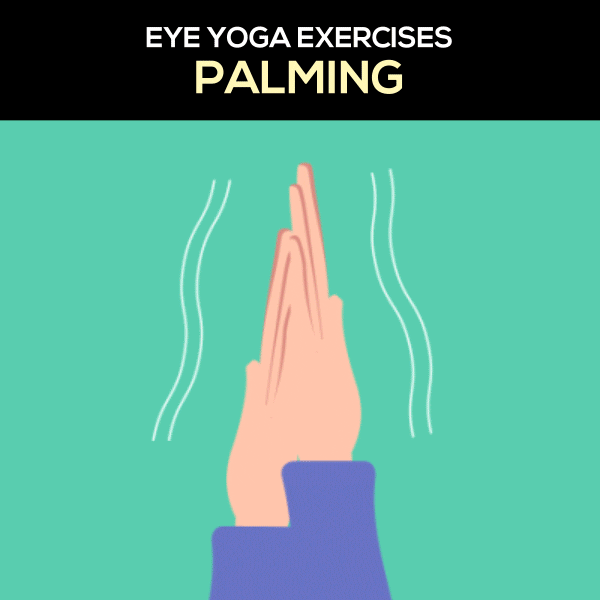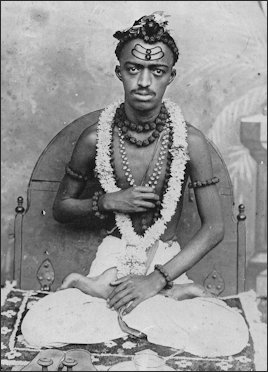
Although Vinyasa Yoga is a popular form of exercise, it is also known for its profound effects on the mind. The poses require intense focus and careful attention to details. It is important to focus on your body and breathe in order to attain a state that allows you to be fully present. This is the goal: to achieve a state of mindfulness as quickly as possible, and to keep it going for as long as you can. This type of yoga can be a great choice for busy people.
The poses are generally challenging, which requires deep breathing. This type of breathing is essential for dealing with stress, and pushing through physical obstacles. During yoga classes, long inhales and exhales through the nose signal the brain that the body is in control. This sends a signal to the brain that it is important to keep the focus on the heart. Moreover, it also helps in preventing injuries.
Vinyasa yoga classes last approximately an hour. You can find classes that last much longer. Some take only 30 seconds. The studio should be able call you in advance to confirm the class duration. The sequence will have a variety poses, as the name suggests. You can choose a vinyasa-yoga class that is suitable for you, depending on how intense.

If you are new to vinyasa yoga, you might be intimidated by the class. Every class is different. Most classes begin with breathing exercises and end with a restorative yoga pose called Savasana. This is meant to ground you in the moment and reconnect you with your breath. The majority of classes begin with a few warm up poses, such as the Cat Cow pose or Downward Fassdog. It is important to get a variety of experience with instructors before you commit.
Vinyasa is a type of yoga that requires continuous movement between positions. While it's a fast-paced style of yoga, it is still a meditative practice. This style of yoga has a lot to do with the constant movement between postures. This style of yoga also helps you to build a strong mind-body relationship. You can use the breath to focus on the poses without holding your breath or breathing rapidly.
Vinyasa yoga improves flexibility and posture. It's also great for building core strength and muscle. It is an excellent form of exercise that improves balance, core strength, and range-of-motion. This exercise is ideal for beginners who may not be used to stretching.
Your level of flexibility, strength and ability are important factors when choosing a vinyasa course. You will find it easier to take a beginner's course than an advanced class. You'll be able to achieve the same benefits in a beginner's class. In addition to your flexibility and strength, vinyasa helps you develop a healthy mindset and physical fitness. Throughout the entire class, you will be able refocus on your breathing.

Vinyasa Yoga is a form that emphasizes meditative movement. It will help you become more mindful of the present moment, as well as your surroundings. It's important to keep your mind and body focused on your breathing during Vinyasa. Vinyasa will help you develop mental agility and physical stamina as you practice it. Your practice will improve as you continue practicing it.
Vinyasayoga has many meditative advantages. It can help you improve your mental and physical health. It can also help you to overcome stress and improve your mood. Vinyasa classes may include a combination of postures and yin postures. If done correctly, it can be like a moving meditation. You will feel more energetic, vibrant, relaxed, and alive.
FAQ
Are Cardio exercises good or bad for your health?
Cardiovascular exercise is a great way to improve your cardiovascular health. It improves blood circulation, strengthens heart muscle, gives you energy, and can even help you lose weight.
Cardiovascular exercise includes running, biking, hiking, swimming, tennis, basketball, soccer, volleyball, football, etc.
It is important to remember that cardio exercises should not be performed at high-intensity levels. This could result in injury.
You should only perform the cardiovascular exercise if you are feeling well.
It is important not to push yourself beyond your limits. If you do, you might injure your self.
Cardiovascular exercise is best done warm-up first. Start slowly increasing your intensity.
Be aware of your body and listen to it. If you feel pain when doing cardiovascular exercise, you should immediately stop.
After a cardio workout, it is a good idea to take a break. This gives your muscles the chance to heal.
Cardiovascular exercise can help you lose weight.
It is the best method to lose calories and reduce belly weight.
Can I go to a gym 7 days per week?
Yes, you could go to the gym seven days per semaine but not all at one time. You need to find a time that you are able to do this without feeling exhausted or drained.
This will help keep you motivated and give you energy for other activities.
Also, ensure you eat healthy during these times. This will ensure that you aren't tired and slow when you go to the gym.
You must ensure that you don't have any other competing demands on your time. If you have children, it is a good idea to avoid going to school on the evenings as they can distract from your workout.
Is Cardio Better Than Strength Training?
Both are equally great. If you want to increase muscle mass faster, cardio is the better option.
Cardio burns more calories per minute than strength training and burns more fat.
Strength training builds muscle mass, but it takes longer to achieve this goal than cardio.
What is your favorite workout to build muscle mass?
There are two major exercises that you should do when you want to build muscle mass. These are isolation exercises and compound moves. Isolation exercises target particular muscles, while compound movements focus more on several groups at once.
It is important to do exercises that work all of your major muscles groups. This will ensure that you work hard every session.
MyFitnessPal is an app that allows you to track your activities. You can log everything, from calories burned to weight lifting. You can also create customized meal plans based upon your goals.
What if I exercise and drink alcohol?
Yes. Alcohol can increase energy expenditure, speed recovery time, and reduce soreness.
Alcohol also increases insulin sensitivity, making it easier to absorb glucose.
Alcohol can also cause dehydration which can lead to a slower metabolism. It also reduces testosterone production, which may decrease muscle-building potential.
Women shouldn't consume alcohol before exercising. Women who are heavily alcoholic should wait at minimum 24 hours before starting to work out.
It is important that women who are nursing avoid alcohol.
Men should limit their alcohol intake to just one drink each day.
Do I have to exercise every single day?
No! At least 30 minutes moderate-intensity exercise five days per week is a good goal. It means you need to exercise hard enough or walk fast enough that you are slightly out-of- breath.
Statistics
- 10 pounds in a month is likely during a lean bulking phase, especially for beginners. (muscleandstrength.com)
- An estimated calorie range for moderately active adult males falls between 2,200 to 2,800 calories per day, depending on age. (eatright.org)
- According to the American Heart Association, blood pressure should be checked at least once every two years, beginning at age 20. (my.clevelandclinic.org)
- According to the American Academy of Dermatology (AAD), men over 50 are at a heightened risk of developing it. (healthline.com)
- Candidates and applicants must pass all four tests at 70% (minimum level) to graduate from Basic Deputy U.S. Marshal (BDUSM) Training. (usmarshals.gov)
External Links
How To
What nutrients does a person need every day?
Men require daily nutrition for healthy growth and development. Vitamins, minerals, vitamins, nutrients, carbohydrates, fats and fiber are all essential for the body.
Males also require specific nutrients at certain times of the day. You can see that your body uses energy to make hormones. You use protein to build muscles and repair damaged tissue when you wake up.
Your body uses the night to break down fat and store extra energy as glucose. Your body still requires sufficient nutrients and calories even though it needs less calories. If you feel hungry, you can have a snack in the evening.
For your body to function properly, it needs adequate amounts of protein and carbs. If you train hard, you may experience muscle soreness after exercising.
To prevent this, you should eat carbs as well as protein within the first two hours after training. Your body will breakdown stored glycogen and provide you with glucose for energy.
After your workouts, you should eat protein immediately. This prevents the breakdown of muscle tissue that occurs while you sleep.
Your body produces lactic acid during high levels of physical activity. Lactic acid builds up in the bloodstream and causes fatigue. This can be avoided by eating foods high in carbohydrates like fruits and vegetables.
Carbohydrates are a good source of energy to help you recover from hard exercise.
A healthy diet should include lean meats such as fish, eggs and milk, cheese, yogurts, beans, seeds, nuts, and beans.
These foods all contain high-quality proteins. Protein promotes muscle growth and repairs damaged tissues. It also provides the amino acids your body needs to produce sex hormones and testosterone.
A healthy skin, nails and joints requires sufficient dietary fats. Healthy men need between 20% and 35% of their total caloric intake from fat.
Fat protects your heart from cancer and keeps it strong. Your brain also functions properly thanks to fat.
Vegetable oils, such as olive oil, sunflower oil or corn oil, soybean oil and peanut oil, can supply most of the fats you require.
These oils are rich in monounsaturated essential fatty acids (MUFAs). MUFAs help lower cholesterol and reduce inflammation. They protect your cells and prevent damage from free radicals.
Saturated fats (SFAs) are found mostly in animal products like meat, dairy products, and butter. SFAs increase LDL ("bad") cholesterol, and increase triglycerides. They also promote weight gain and belly fat.
Plant-based oils such as vegetable oil, nuts, seeds, or grains are rich in polyunsaturated fats (PUFAs). PUFAs improve cardiovascular function and decrease inflammation. They are also good for controlling blood sugar and cholesterol.
Erectile dysfunction is common in men with low HDL ("good") cholesterol. Saturated fats are a major source of bad cholesterol. This lowers good cholesterol.
Men who eat large quantities of red meats or pork may develop prostate problems. If cooked at high temperatures, the nitrates become nitrosamines. These compounds can cause cancer.
Most processed meats have nitrites and harmful chemicals. Avoid them.
The American Heart Association suggests that no more than two servings per week of red meat should be consumed. Instead, choose poultry, fish, legumes, tofu, whole grain bread, and cereals.